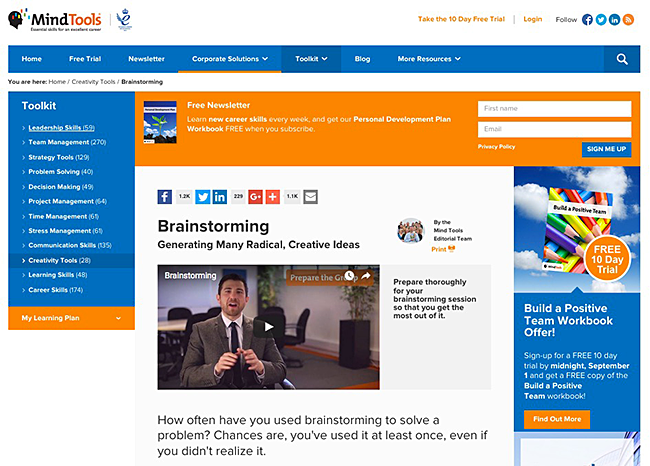Brainstorming
Background:Brainstorming is the most familiar and popular idea-generating technique for groups. Its formalization is attributed to Alex Osborn in Applied Imagination.

Useful in all stages of a larger problem-solving process, brainstorming is entirely divergent. The object of a brainstorming session is to generate many and different kinds of ideas without interference from judgment, whether such evaluation is positive or negative.
Description:Every combination of three or four basic brainstorming rules can be distilled into one principle, namely, Quantity Over Quality.
In order to achieve Quantity Over Quality, all participants refrain from expressing judgment of any ideas presented and encourage the free flow of all sorts of random, disconnected, and unusual ideas. Rather than criticizing an idea that seems to be inappropriate, members of a brainstorming group build upon and any idea offered or continue to generate additional ideas.
Successful brainstorming sessions can be impromptu and informal or meticulously planned and professionally facilitated. They can be conducted anywhere at anytime, in face-to-face meetings or virtually in formal or spontaneous online or over other telecommunication media. Sessions can take place in real-time, where everyone works at the same time, or asynchronously, in which case, participants submit and exchange ideas over time using a suggestion box, mail, email, or other means of communication. An idea-generation effort may combine any number of these brainstorming configurations.
In all cases, the results of a brainstorming session can be improved by presenting a well defined problem along with sufficient but not too much background information. Results can also be improved by inviting a mix of participants who can offer as many divergent points of view as possible.
More About Brainstorming:
